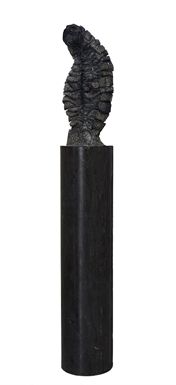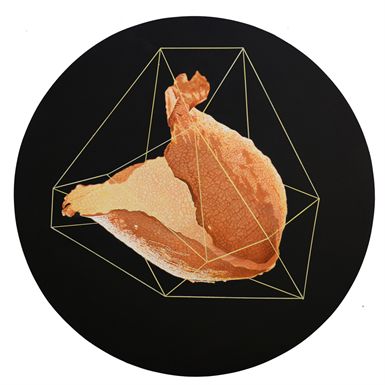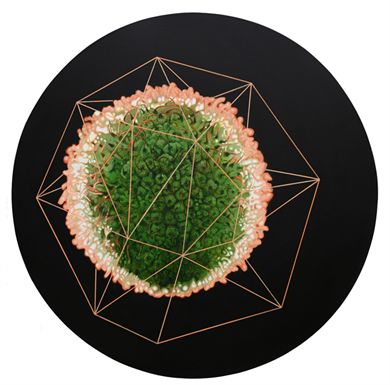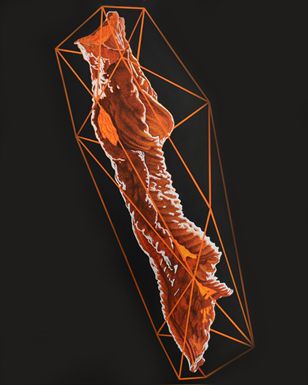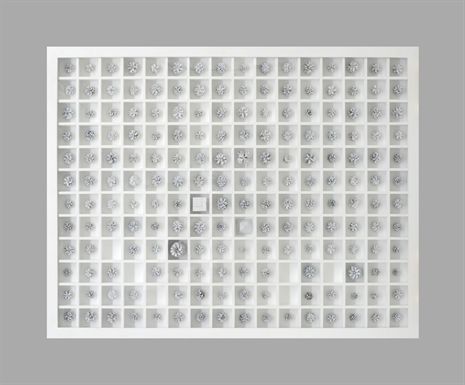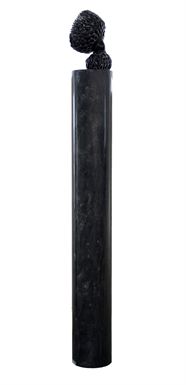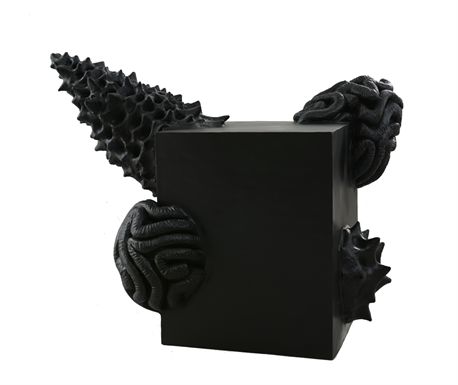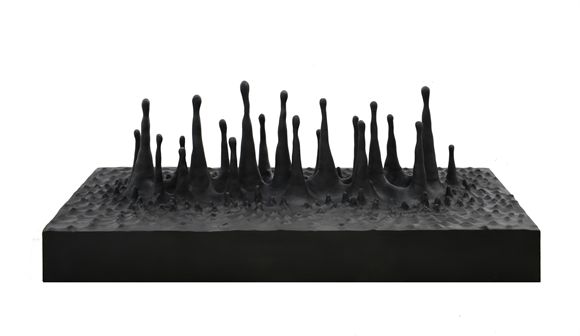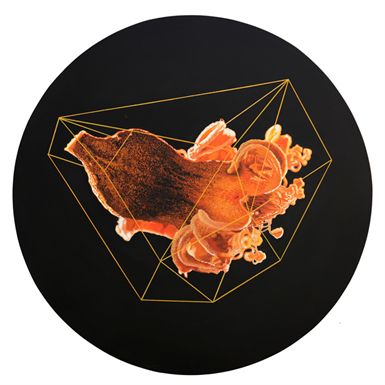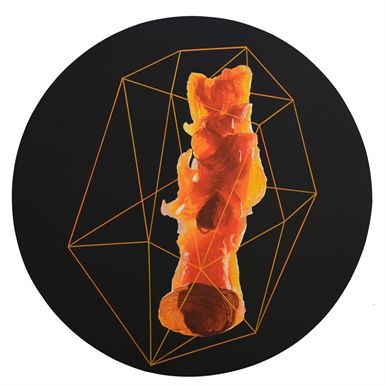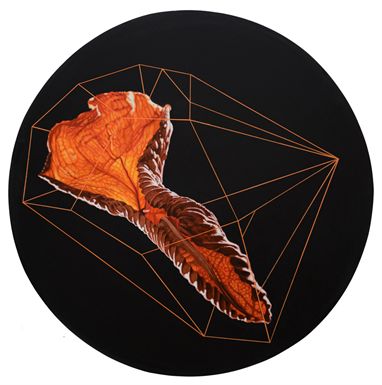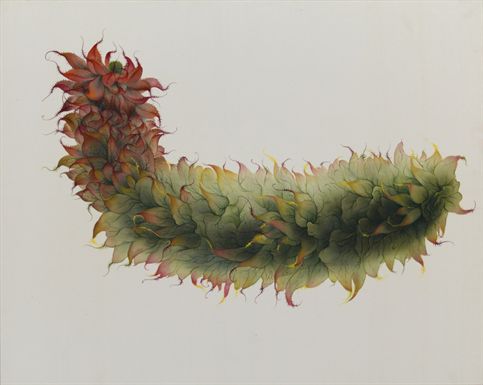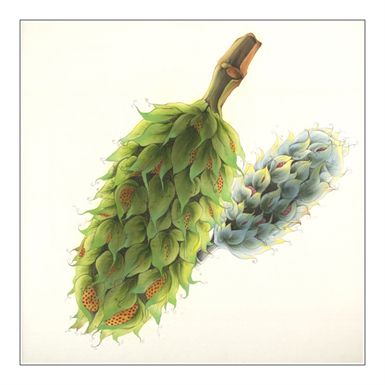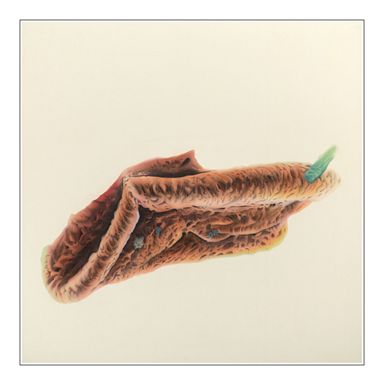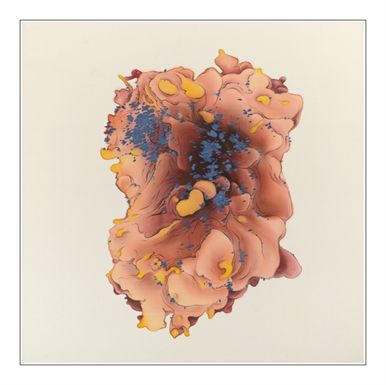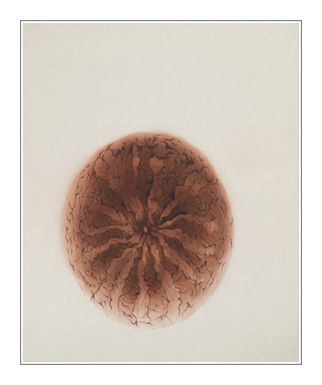Jun 07 - Jul 21, 2015
Press Release
Whitebox Art Center is pleased to announce the opening of “Spritual Crystals” – Cang Xin Solo Exhibition from June 7 to July 6, 2015. The opening will be at 4pm on june 7.Curated by He Guiyan, the exhibition presents approximately 40 artworks in paintings and installation the artist has created in the last three years.
Since 1993, Cang Xin became involved in the waves of the avant-garde art movement through performance art. His Trampling Faces, Communication Series, Identity Exchange have adopted the “body” as the medium in exploring people as objectively existing entities, and their various response and strategies against the transformation of a time. The artist has applied adroit artistic language to account the glimmering light. During this time, “Shamanism” became Cang Xin’s spiritual guidance and the consciousness of life, believed in primitive religion, since, it has been present in Cang Xin’s artworks. Since 2004, the artist’s approach has taken on a new direction, who transitioned from performance art to installation, multi-media, paintings and etc. Although they tend to be characterized by cross-media, while the artist’s concern on the animism of primitive religion and the simple yet mysterious life consciousness remains the same.
The artworks exhibited comprise of the series, Sub Configuration, Hidden Quantification, Hidden Consciousness, and the Origin of the Sacred Geometry. They differentiate from his earlier performances, as the artist attempts to transform his private and sensual knowledge into particular visual forms, conveying various issues on matter, consciousness, life, spirit and etc. that are yet to be solved with existing knowledge system and methods of analysis. In fact, the artist’s inspirations are drawn from shamanistic culture, which believes in animism, or the energy, form or consciousness behind all things has an invisible aspect.
If Cang Xin’s performances realized the dialogues between men and nature on a certain unknown level, then the works in this exhibition are the artist’s continuation of explorations on nature and life who aims to account for the existence in the vitality of the spirit, moreover, sublimate this theory and presenting it. The exhibition, “Spiritual Crystals” brings us into Cang Xin’s animistic system, to experience the world of mystery, unknown and full of energy in his works.
Curator Article
“Animism” – The spiritual world in CangXin’s artworks
He Guiyan
Since 1993, CangXin became involved in the avant-garde art wave through performance art. Unlike the performance art presented in the 1980s focusing on the performance, incidental and ritual aspects, the artists in the 1990s emphasized on the express of the “body”, some highlighted the relationship between the body and gender, some represented the trauma on the body, some engaged the body in issues of identity politics, and others discussed the tension established between the body and external power. Equally using the “body” as the medium, most of CangXin’s works wished to appropriated ideas of the “Shaman”, who has integrated certain ideas of life of the primitive religion that cultivated the northern hunters and herdsmen tribes into his works. Since 2004, the artist’s approach has taken on a new direction, who transitioned from performance art to installation, multi-media, paintings and etc. Although they tend to be characterized by cross-media, while the artist’s concern on the animism of primitive religion and the simple yet mysterious life consciousness remains the same.
Between 2006-2008, under the title, “CangXin Mythology”, the artist has held a series of solo exhibitions. Whether the paintings in “CangXin Mythology” or the series on Bizarre Plants and Flowers, his previous creative concept where further developed. In Bizarre Plants and Flowers, the artist left charcoal in the furnace, and churning it to physical charcoal at high temperature, then adopting sculptural language to integrate various elements such as animals, plants, carbon products and viruses. In this natural world filled with life, it is both surreal, while comprising of real factors; it not only has the mysterious and imaginative aspect, but also certain degree of familiarity. On the one hand, it comes from experiences of everyday life and judgment based on existing knowledge, we would discover certain familiar icons in his work; on the other hand, what is surreal, the grotesque aspects are separate from the everyday visual experience and sensual parameters. Then, the quotidian and the unusual, reality and imagination, the rational and the irrational mysteriously fuse together, at the same time, establishing a certain tension, entangled and compete with each other. CangXin aims to find a middle ground, on which his creative practice may be supported.
Although, it seems very difficult to define or capture such “middle ground”, because it is located in a state of uncertainty and dissociation. In fact, whether it is the mysterious sense of life conveyed in Bizarre Plants and Flowers, or the dissociative state of the “middle ground”, they are still somewhat related to certain concepts of Shamanism. Shamanism believes in animism, it has multiple icons of worship, for example the various spirits, plants and animals as well as the lifeless natural objects, including certain natural phenomena. More importantly, they believe that there is no strict distinction between form and formless, life and lifeless, everything can convert mutually. According to Shaman ideas, even dust has life. Certain primitive creed and animistic points of view in the Shamanistic concept, the physical world is inseparable from the simplest physical element that consists of the Universe. Yet, it is between the form and the formless, in the conversion of the lifeless to life, there is an actual point of contact. This point in the metaphysical field is similar to the “middle ground” between knowledge and sensibility, the rational and irrational.
Since the universe comes of the myriad of things, then following the existing definitions of “matter”, CangXin embarked on reverse thinking. Thereon he invented a new word, “Secret matter”. According to early Chinese philosophical ideas, the world consists of the five basic elements, “Gold, wood, water, fire and earth”. Although, based on modern biology, the simplest form of life is the microbe that can only be seen under the microscope. Then, what is “secret matter”? Simply said, matter that is unseen, unstudied by existing science and technology, while exists in reality. Once the conditions become favorable, or under certain unique circumstances, these “secret matter” would develop into a new form of life. According to this logic, when CangXin made the work Sacred Geometry, he invented a new term, “secret life”. The so-called secret life is the immature, unknown, and yet to be discovered body of life, engendered by the “secret matter”. This is a process of becoming, and a derivation of life from matter, energy and bodies of life. Based on similar reverse inquiry, based on rationalism or consciousness, CangXin has constructed an alternative tension with “secret consciousness”. The artist explains, “Modern theoretical physicist believe, ‘secrete matter’ is located in ‘negative space’, and the ‘secret matter’ constitutes the primary component of the universe, then, I think consciousness and spirits are ubiquitous in the void of the universe, eternally constant, and form of existence for these bodies of energy of spirits or consciousness are invisible to men. Thus, I call it ‘secret consciousness’, which I believe are the energy carriers in the microcosm, its constituents are microscopic, organic life energies.” In fact, the artist’ interest in issues such as “secret matter”, “secret life”, “secret consciousness” were inspired by Shamanism, while there is an internal logic within it, if one were to consider these ideas as a new beginning, they correspond to matter, life, consciousness, as well as the existing knowledge and rationale.
In the Generated Sacred Geometry series, we can see two types of images. One is the various types of animals, figuratively speaking, they are related to the “bizarre plants and flowers” series. The other is a number of enigmatic, abstract, geometric icons. In the narrative structure of the artworks, they overlap and mirror each other, an approach not only creates a good visual rhythm, but the two types of icons and two types of logic constitutes a new system of meaning. In this system, the former represents the “secret matter” and “secret life”, its juvenile and impregnated life physique; and through the latter, those abstract and geometric appearance, we would realize these images resembles to drawings of constellations, that might be related to religion, at the same time, they follow certain mathematical logic, controlled by an enigmatic power. Although it is unknown whether they have specific iconographical source, but what is certain is that these images represent matters have been rationalized and controlled by knowledge. These two types of images in fact suggest two different ways of relating nature, understanding of life patterns, or even representing two different knowledge discourses. Thus in the dichotomous systems of discourse, in the inter-referential structure of meanings, the artist adroitly expressed “secret matter” and “secret life”. In his later painting series, Secret Consciousness, the natural objects on canvas seem grotesque and diversified, brimming with life. Whether he has adopted a surrealist approach, observing through an “gaze”, or translating visual forms, the aim of the artist is to bring the viewers into the self-efficient and spiritually driven world of these life bodies. Eventually, the concept of the “secret consciousness” is appropriated through artistic expression, and becomes fully visualized. Although The Spiritual Crystals is manifested through sculpture, while its creative idea is equally satisfying as Secret Consciousness. The installation and multi-media artworks composed of hundreds and thousands of grains, seeds, shells, ganoderma and etc., has certain implications of cultural anthropology.
The ancient Greek philosopher Protagoras once said, “People are measurement of all”. According to his implication, what defines matter is based on people’s senses and consciousness. Thus, humanity had to establish law for “everything”. Then, how can the external world be stated and commanded? Humanity needs to adopt experiences, judgment, through studying and discovering means, and use logos to establish various knowledge systems. Yet, with the progressive development of modern archaeology, new theories on physics, including on occultism, neuro-analysis and other fields of studies, we would discover that according to existing systems of knowledge and methods of analysis, in the fields of matter, consciousness, life, spirits and etc., many questions remain unsolved, or untouched. CangXin’s work in the last decade, whether on the subjects of “secret matter”, “secret life”, “secret consciousness”, or “potential forms”, “spiritual crystals” and etc., aims to construct an unknown world that is imagined, full of life and mysterious beyond the given senses, systems of knowledge and chronology of art history. In this world, the form and the formless, the life and lifeless, matter and spirits can be mutually converted. It is also in this perspective, his artistic practice is not devoted to pushing forward the discourse in the history of art, but engaging expressions based on cross-discipline through multi-media, who continue to present his inquiry on the issues of matter – spirit- animism- and life consciousness.
What is somewhat paradoxical is, behind the concepts of “secret matter” and “secret consciousness”, it seems very difficult to find concrete scientific reference, or to reach a necessary consensus, if such discourse were to become effective, CangXin would only have to construct in reverse, that is, to set up “secret matter” vs. matter, “secret life” vs. life, “secret consciousness” vs. rationale. It is within the ontological chain of such system of discourse, such concepts would see clear in comparison. And the so-called dichotomy is the point of contact marks the competition of these opposing discourses. Likewise, such paradox is also reflected visually. For example, if “secret matter” exists, and they are not captured or sensed by people, nature does not have the conditions of visualization. of course, art is not the same as science, the appeal in CangXin’s works is the expansion of people’s existing experience, touching upon boundaries of given systems of knowledge through these mysterious, animistic nature and world of life. His unique way of working and the path of development have provided new methodology and other possibilities to the field of contemporary art.

